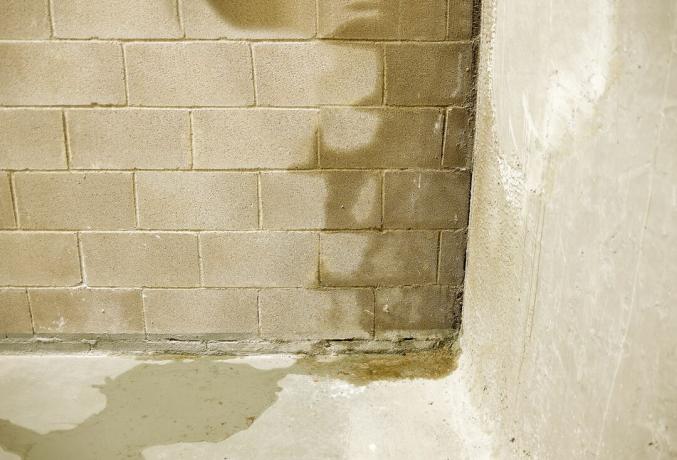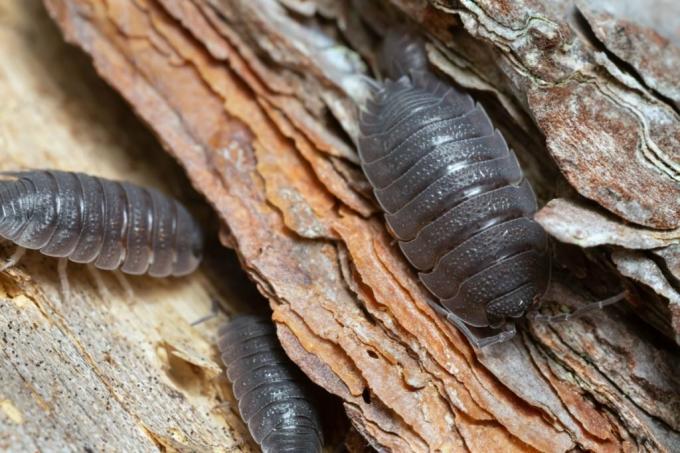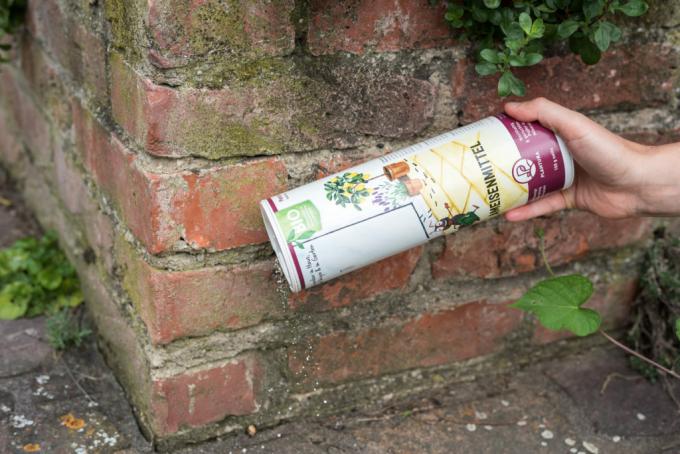Woodlice are small beneficial insects. However, anyone who has them in their own home should take care of the infestation: their presence indicates moisture.

woodlice (Porcellio scaber) are nocturnal woodlice within the class of higher crustaceans (Malacostraca). As saprophages, they feed on dead organic matter (detritus) and are among the beneficial insects because they are involved in the formation of humus. In the house they can appear as storage pests. In order to get rid of them permanently, it is always necessary to combat the causes, as you will learn below.
contents
- Prevent woodlice in the house
-
Get rid of woodlice
- Woodlice Trap
- drive away woodlice
- Woodlice in the garden
- Combat woodlice biologically
It is advisable to prevent woodlice in the house, as their presence is a warning sign. How to get rid of existing isopods with home remedies, whether they can also be fought in the garden and We have researched for you which biological alternatives to classic home remedies are available and tried out.
Prevent woodlice in the house
The origins of the woodlouse lie in the water, which is why it still carries around rudiments of gills. Her preference for moisture has remained. At least 70% humidity should prevail in a place where the isopod stays. The presence of woodlice in the basement, bathroom or garage, for example, is a warning signal - 70% humidity is not good for the building fabric in the long run. Reasons for the moisture can be the following.
Reasons for increased humidity:
- A water damage
- Rising moisture from the ground (horizontal moisture penetration)
- Cracks in the basement wall, leaky sealing of the basement wall (vertical moisture penetration)
- Incorrect ventilation
- Damp laundry, dryer without a water collector
- Moist supplies such as vegetables or fruit
- Wet organic waste
So if you have discovered woodlice indoors, you should first find out the cause of the moisture. Water damage and leaky walls are not so easy to fix and more of a case for a specialist company. However, damp laundry and damp supplies or rubbish in the basement can be avoided or compensated for by proper ventilation.

How do you ventilate properly to reduce humidity?
- Initially, you should ventilate the room two to three times a day for 5 to 10 minutes, if possible when the outside temperature is cool.
- If the humidity is lower, it is sufficient to air the room for 15 minutes once a day in the morning or in the evening.
- If you don't have enough or large windows for effective ventilation, you should Drying laundry and storing damp supplies or rubbish in the affected space is essential refrain
Once the crustaceans have established themselves as camp pests and are eating tunnels in your potatoes, picking them up and removing them is ineffective. However, you can change something in your storage technique. If you have no other storage location for your fruit and vegetables, you should ensure that they are stored in a clean and inaccessible place. Hang everything up in nets or at least store it on a raised floor and in well-ventilated boxes and regularly discard the bad ones. Last but not least, it is important to find out how the woodlice were able to get in in the first place. Cracks and crevices on windows and doors can be closed with putty, clay or silicone and you should also check stored potted plants. If these are damp and smell musty, this is not only a favorite hiding place for isopods - the roots of the respective plant also suffer from a substrate that is too moist!
Get rid of woodlice
In the previous paragraph you learned how to combat the causes of a woodlice plague. Of course, you also want to get rid of the crustaceans that are present. Because the useful decomposers can at least still work for you in the garden, we recommend catching the animals in traps and then releasing them. In their total of two years of life, they can still produce a lot of humus for you and thus compensate you for the effort involved. the compost for example would be a perfect new home for the isopods.
Woodlice Trap
There are many ways to construct a woodlice trap. Below are four different methods that have been tried and tested.
- Place a boiled potato on a plate on the floor of the affected room. The potato may also be a little older. Put a damp cloth on the plate and use a piece of wood or something similar as a step for the isopods. This is how they get on the plate and hide under the pleasantly damp cloth after the meal. The next day you can take the whole plate outside.
- Simply place two damp cloths one on top of the other on the floor of the affected room. The bottom cloth should be thin and lay flat on the floor. The top cloth may be draped in folds on top. Keep the top cloth damp with a spray bottle for several days. After a few days, many isopods will have gathered between the cloths and you can gather the bottom one up like a sack and take it all out together.
- Set up a lure. Again, an old, boiled potato is a good choice. Surround this attractant with double-sided tape. On the way to the food source, the isopods stick to it. Unfortunately, you won't be able to detach them from the tape, so exposing them is out of the question.
- Woodlice are attracted to alcoholic fumes. Fill a bottle with a puddle of hard liquor and place it on the floor. You can use a stick or something similar to give the woodlice access to the opening. Because the bottle tapers towards the neck, you won't be able to get out of the bottle once you're high. Unfortunately, we do not know whether drinking alcohol shortens their lifespan.
Tip: All the traps mentioned work much better if the causes of the isopod plague have been eliminated beforehand. Because then the crustaceans only find optimal living conditions in the trap.
drive away woodlice
Supposedly woodlice can't stand some substances: baking soda, cinnamon and sage apparently reject them. You can use these means to work additionally, for example to talk them out of moving to other premises. To do this, spread out a barrier of the fabric about two inches wide. But at least in the house you cannot avoid fighting the causes and actively removing them. Outdoors - the natural refuge of woodlice - cinnamon and co. can be useful to get rid of woodlice, ants and silverfish keep away from terraces and balconies.
Woodlice in the garden
Woodlice are one thing above all in the garden: Useful! We should be grateful to them for their activity, because it provides us with fertile, nutrient-rich soil. Natural enemies of isopods are toads, frogs, mice and songbirds. So if you have the impression that isopods are rampant, you can try to encourage their presence. Of course, absolute cleanliness also keeps crawlers away. So if you don't want to see them in your flower pots and on the terrace, you can ensure that there are no plant remains, moss, dirt or even food leftovers. You can also use the household remedies mentioned above to drive away the woodlice here - after all, what speaks against transplanting with fragrant, healing sage?

Combat woodlice biologically
You may not have the time or inclination to install elaborate trap structures or keep your patio completely free of all organic debris. As long as you have the moisture in your living space under control, you can now take easier ways to combat isopods. An effective way offers our Plantura ant remedy. You can spread it in affected rooms - especially where the woodlice like to hang out, in crevices, cracks and hiding places. If they come into contact with the dust-free kieselguhr, it will be gone within four days at the latest. For you as a user, for children, pets and non-target insects, the pure diatomaceous earth poses no danger when used correctly.
Ants and silverfish can also be fought with the agent. However, since it works through the arthropods' chitinous armor, other insects would also be harmed if the agent were used in the wrong way. Therefore, please note our detailed instructions for use when using it.

More information on the effective Control of Woodlice you'll find here.


